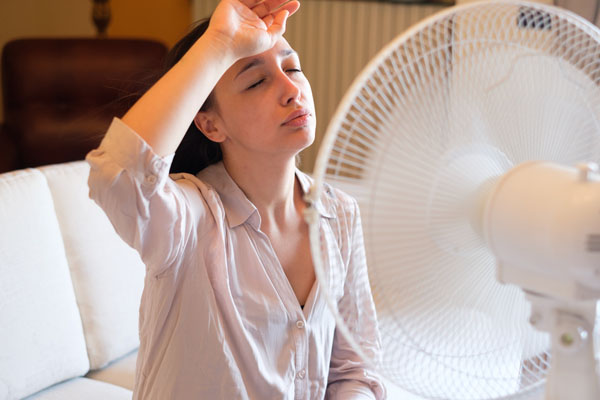Benefits Of A Whole-Home Dehumidifier

According to the University of Missouri, hot and humid air creates ideal conditions for dreaded mildew growth. Mildew is a powdery fungus that grows on damp surfaces, from food to floors. Different from mold’s black and green appearance, mildew appears gray, yellow, or white and is not slimy or fuzzy. Unfortunately, the presence of mildew in a house can trigger respiratory issues such as asthma and wheezing. It can also leave behind ugly stains on surfaces, and if left untreated over time, it can even ruin precious belongings. With summer fast approaching, it is imperative to take measures that will eliminate indoor air pollution and correct poor air quality before it takes a toll in the home. One of the easiest ways to achieve this goal is to invest in a decent whole-home dehumidifier.
How Can A Whole-Home Dehumidifier Help?
Table of Contents
A dehumidifier is an electrical appliance that removes moisture from the air. It brings down the overall humidity in the room or home. Dehumidifiers vary in size based on the capacity of the room or home in which they will be used in. For instance, the Association of Home Appliance Manufacturers (or AHAM) notes that a 500-square-foot house that is moderately damp would only need a 10-pint per 24-hour dehumidifier to make a difference.
How Does A Whole-House Dehumidifier Work?
Whole-house dehumidifiers typically work in tandem with the home’s heating, ventilation, and air conditioning (or HVAC) system. Therefore, in order for a whole-house dehumidifier to work properly, it must be attached to the home’s HVAC system. This requires assistance from a certified HVAC technician in order to complete the installation.
The main parts of a dehumidifier include a fan, a compressor, and a storage tank. When it is turned on, the fan draws hot humid air into the machine and directs it to the compressor. Once it reaches the compressor, the air contracts, and the moisture within it condenses, which causes droplets of water to form. These droplets then fall into the storage tank while the remaining dry air flows back out into the room.
Importantly, it is dangerous to run a dehumidifier for too long. If left on for an extended period of time, it may suck all the humidity from the air and leave it far too dry. It is wise to only run a dehumidifier for around 12 hours each day, although this may vary based on the dampness level in the home. The United States Department of Energy (DOE) states that for safety purposes during the summer months, it is best to try to maintain a relative humidity that is between 40% and 50%.
What Are The Benefits Of A Whole-Home Dehumidifier?
 There are many upsides to a dehumidifier, whether that is a whole-house version or a smaller one that is meant for a single room. First and foremost, these machines promote overall comfort. Too much humidity can make people feel overheated while causing the skin to feel clammy and sticky, giving guests and those who live there that feeling of needing a shower. By removing the excess humidity, your skin will feel much better, and everyone will feel cooler during those periods of high temperatures.
There are many upsides to a dehumidifier, whether that is a whole-house version or a smaller one that is meant for a single room. First and foremost, these machines promote overall comfort. Too much humidity can make people feel overheated while causing the skin to feel clammy and sticky, giving guests and those who live there that feeling of needing a shower. By removing the excess humidity, your skin will feel much better, and everyone will feel cooler during those periods of high temperatures.
Interestingly, dehumidifiers can also reduce energy bills. When a house is too humid, the HVAC system has to work extra hard to try and remove the excess moisture. All of this extra work leads to an increase in energy consumption and, therefore, a higher energy bill. However, in a drier atmosphere, energy consumption is significantly less, leading to a lower energy bill.
Prolonged use of dehumidifiers in homes with poor air quality is said to prevent respiratory issues and protect belongings if they are used properly. Since mildew thrives in a humid environment, respiratory problems are imminent in a house with no control over moisture levels. Similarly, the same damp air can stain window frames and walls, warp furniture, and even bubble paint. The long-lasting damage can be quite significant and much more costly than investing in a whole-house dehumidifier.
How Do I Choose A Whole-Home Dehumidifier?
Dehumidifiers come in different sizes and capacities and are equipped with different special features. Before purchasing a whole-house dehumidifier, it is important to take several different factors into consideration. Is the air quality poor only in one portion of the home, where windows are never opened, and people rarely venture? Is the whole house open and bustling, requiring a bigger unit to reach all areas? A smaller home with very little humidity, for instance, would do just fine with a low-capacity dehumidifier. Determine the size of the house and how far-reaching the dehumidifier should be.
Do some research on price points at different retailers. While it is tempting to stick to a strict budget, the cheapest version of a product does not always give you what you want. On the other hand, expensive does not always translate to good quality. Look for a product that includes a warranty. Since dehumidifiers are not meant to be used once, it is best to have some form of protection should the machine stop working after a few weeks or months.
Take noise level into consideration. There is a fan in each machine, so some level of white noise is to be expected. Older models may make considerably more noise than newer or top-of-the-line products. In addition, look at the special features each product is equipped with. Most modern dehumidifiers come with common features such as automatic shutoff when the set relative humidity is attained, a preset option, a defrosting feature, and the Energy Star label to indicate efficiency.
What If I Need Advice?
All of this information can be overwhelming, especially to new homeowners or those with minimal knowledge of air quality and HVAC systems. In these cases, it may be best to consult a licensed HVAC technician. HVAC techs have experience with dehumidifiers and the like and can offer opinions while taking the size of a home and its HVAC system into consideration. They may suggest a simpler, portable dehumidifier for a smaller space, such as if the air quality problem is only present in a single room.
Conclusion
There are many ways to help lower the humidity in a home without a dehumidifier, such as keeping indoor plants that will absorb some of the moisture, hanging wet clothes outside rather than in, and taking cold showers. If these small changes do not do enough to fix the air quality problem, a dehumidifier is the easiest option.
For assistance, contact a professional HVAC company with knowledge of indoor humidity levels and how a whole-home dehumidifier can help. Each HVAC tech has the knowledge and experience to help with advising, installing, maintaining, and even replacing dehumidifiers.
Call Hart Home Comfort For All Of Your HVAC Requirements
 Hart Home Comfort has been the leading service provider of heating and cooling solutions in Nassau County, Suffolk County, and Queens, New York, for many years. We have built our reputation by ensuring that all projects are performed only by professionally certified technicians who have the right training and experience to provide top-notch services to our clients. From tune-ups and installations to replacements and repairs, we can assure you that you and your home are in good hands.
Hart Home Comfort has been the leading service provider of heating and cooling solutions in Nassau County, Suffolk County, and Queens, New York, for many years. We have built our reputation by ensuring that all projects are performed only by professionally certified technicians who have the right training and experience to provide top-notch services to our clients. From tune-ups and installations to replacements and repairs, we can assure you that you and your home are in good hands.
We guarantee that we can offer the most competitive costs in the area while ensuring that we provide you with a higher level of energy efficiency, comfort, and safety. We can always find practical solutions that fit within your budget. If you want to improve the quality of your indoor air, give Hart Home Comfort a call today and ask about our free, in-home estimates.
For any questions about what Hart Home Comfort can do for you, give us a call today. Click here to contact us now or call us at (631) 667-3200 to find out more! Click the link to view our service area.
